The $120 MSI X470 Gaming Plus Review: Only 4-Phase VRM, Not 11-Phase as Advertised
by Gavin Bonshor on October 4, 2018 10:00 AM ESTGaming Performance
Ashes of the Singularity
Seen as the holy child of DirectX12, Ashes of the Singularity (AoTS, or just Ashes) has been the first title to actively go explore as many of DirectX12s features as it possibly can. Stardock, the developer behind the Nitrous engine which powers the game, has ensured that the real-time strategy title takes advantage of multiple cores and multiple graphics cards, in as many configurations as possible.
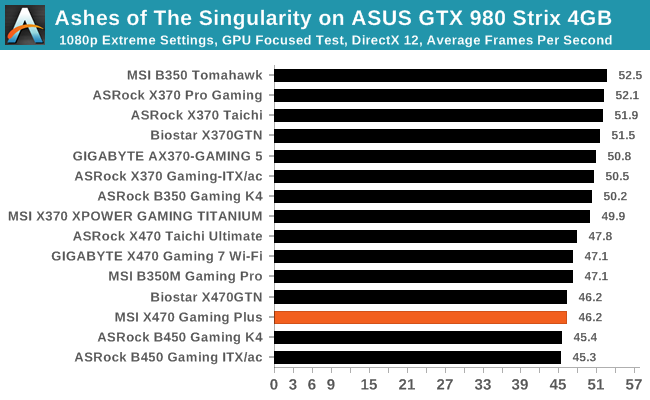
Rise Of The Tomb Raider
Rise of the Tomb Raider is a third-person action-adventure game that features similar gameplay found in 2013's Tomb Raider. Players control Lara Croft through various environments, battling enemies, and completing puzzle platforming sections, while using improvised weapons and gadgets in order to progress through the story.
One of the unique aspects of this benchmark is that it’s actually the average of 3 sub-benchmarks that fly through different environments, which keeps the benchmark from being too weighted towards a GPU’s performance characteristics under any one scene.
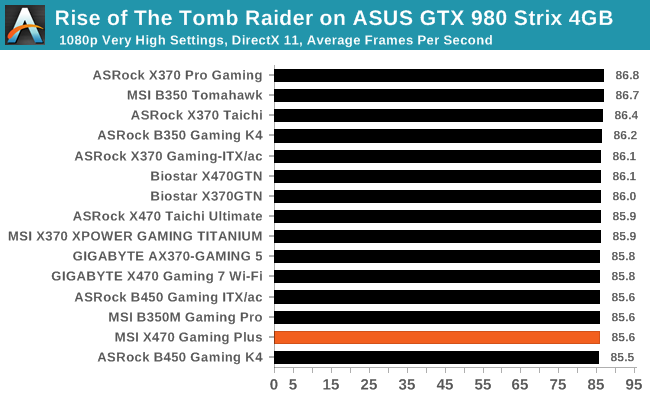
Thief
Thief has been a long-standing title in PC gamers hearts since the introduction of the very first iteration which was released back in 1998 (Thief: The Dark Project). Thief as it is simply known rebooted the long-standing series and renowned publisher Square Enix took over the task from where Eidos Interactive left off back in 2004. The game itself utilises the fluid Unreal Engine 3 engine and is known for optimised and improved destructible environments, large crowd simulation and soft body dynamics.
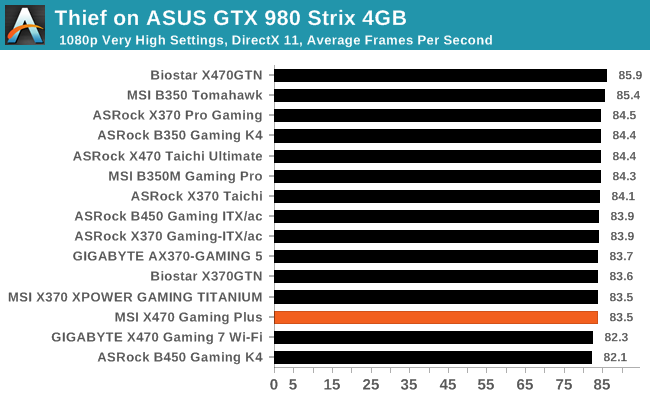
Total War: WARHAMMER
Not only is the Total War franchise one of the most popular real-time tactical strategy titles of all time, but Sega delve into multiple worlds such as the Roman Empire, Napoleonic era and even Attila the Hun, but more recently they nosedived into the world of Games Workshop via the WARHAMMER series. Developers Creative Assembly have used their latest RTS battle title with the much talked about DirectX 12 API so that this title can benefit from all the associated features that comes with it. The game itself is very CPU intensive and is capable of pushing any top end system to their limits.
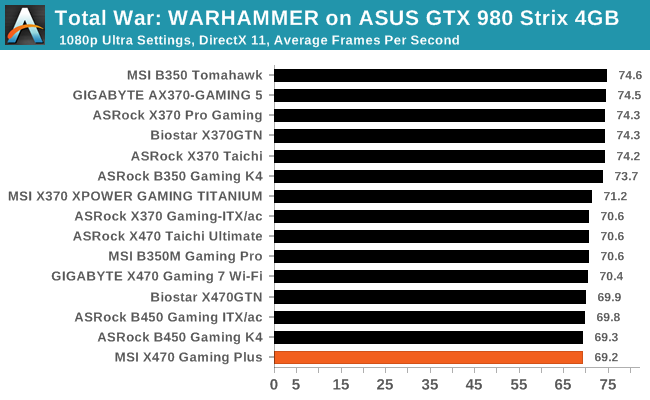




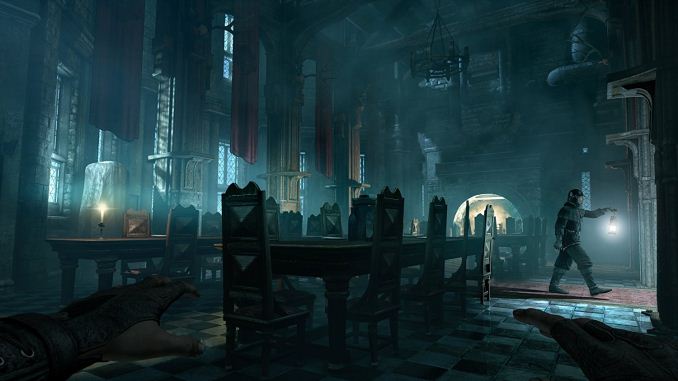
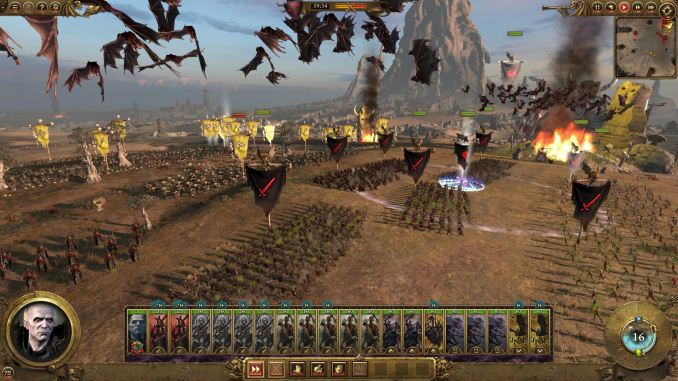








27 Comments
View All Comments
just4U - Friday, October 5, 2018 - link
There really doesn't appear to be a great deal of difference between the Plus and the supposedly better pro version of this motherboard.. and typically, the pro can be had for in and around the same price. I like their Pro Carbon board tho as it's just better all around with more features (better lan/sound to) that imo are worth the little extra you pay.I do have to say that I've been very impressed with MSI's Ryzen MB offerings. The 300 and 400 series have been problem free for me and performed like champs whereas I've had some issues with Gigabyte and Asus offerings in those chipsets.
Oxford Guy - Friday, October 5, 2018 - link
"MSI do include an 8-pin 12V ATX power input for providing power to the CPU as well as an additional 4-pin for users looking to overclock their processors."Buildzoid says these additional power connectors are useless for Ryzen, as I recall. It's not possible to draw more than one power connector can provide, particularly given the anemic VRM setup here.
"This board does have an additional 4-pin available on top of the 8-pin ATX 12 V CPU power input and MSI advertises an 11-phase power delivery under the heatsinks. Underneath the heatsinks, there is an 11-phase VRM present, but the real configuration is revealed in our visual inspection of the board."
Umm.... No.
ballsystemlord - Sunday, October 7, 2018 - link
Gavbon, all the AMD MBs you have reviewed are misrepresenting their amount of power phases AFAIK, is their any way for a consumer to check this before purchasing?Does/has the lack of power phases adversely affected the non-overclocked performance of AMD's top chips?
You see, I'm planning to upgrade next year, and I think that this is important.
Dr. Swag - Sunday, October 7, 2018 - link
For the most part it doesn't matter much unless you're doing extreme ocing. Anything 4 phases and higher with a heatsink is usually gonna be fine for a 6 core and for an 8 core preferably you'd like something a bit beefier to handle the extra power requirements without potentially getting too hot (a fake 8 phase like the gaming plus would probably be fine because the extra fets means more max power the vrm can supply and also greater surface area to dissipate heat through)29a - Sunday, October 7, 2018 - link
Why was the testing done with a 980 and a 1700?Lazlo Panaflex - Monday, October 8, 2018 - link
Agree with 29a. Why haven't you updated the test bed with (at least) a 2700? I doubt people buying these boards are paring them with 1st gen CPUs.Also, in the future could you disable Core Performance Boost and run some benches to see the difference in performance, please? FYI, My 2600 runs at 3.4 when it's disabled, and 3.9 when enabled; I have a MSI B450 Gaming Plus mATX.
Thanks
LP
Frenchyaz - Tuesday, April 9, 2019 - link
I've been so disappointed with MSI. I had a former generation 990FXA-GD80 and it has been rock solid from the get go. It had Military class 4 Caps and all bells and whistles.I got this board to upgrade along with a 2600X and the A2 Dimm port was dead, great. I returned the board and get another one after I called support and guess what, same Dimm port was also dead.
I returned the CPU and board, no more MSI for me.
So this board may be great when working but for me, I'll wait and will get a x570 when out, from Asus. Never had issues with Asus...we'll see.